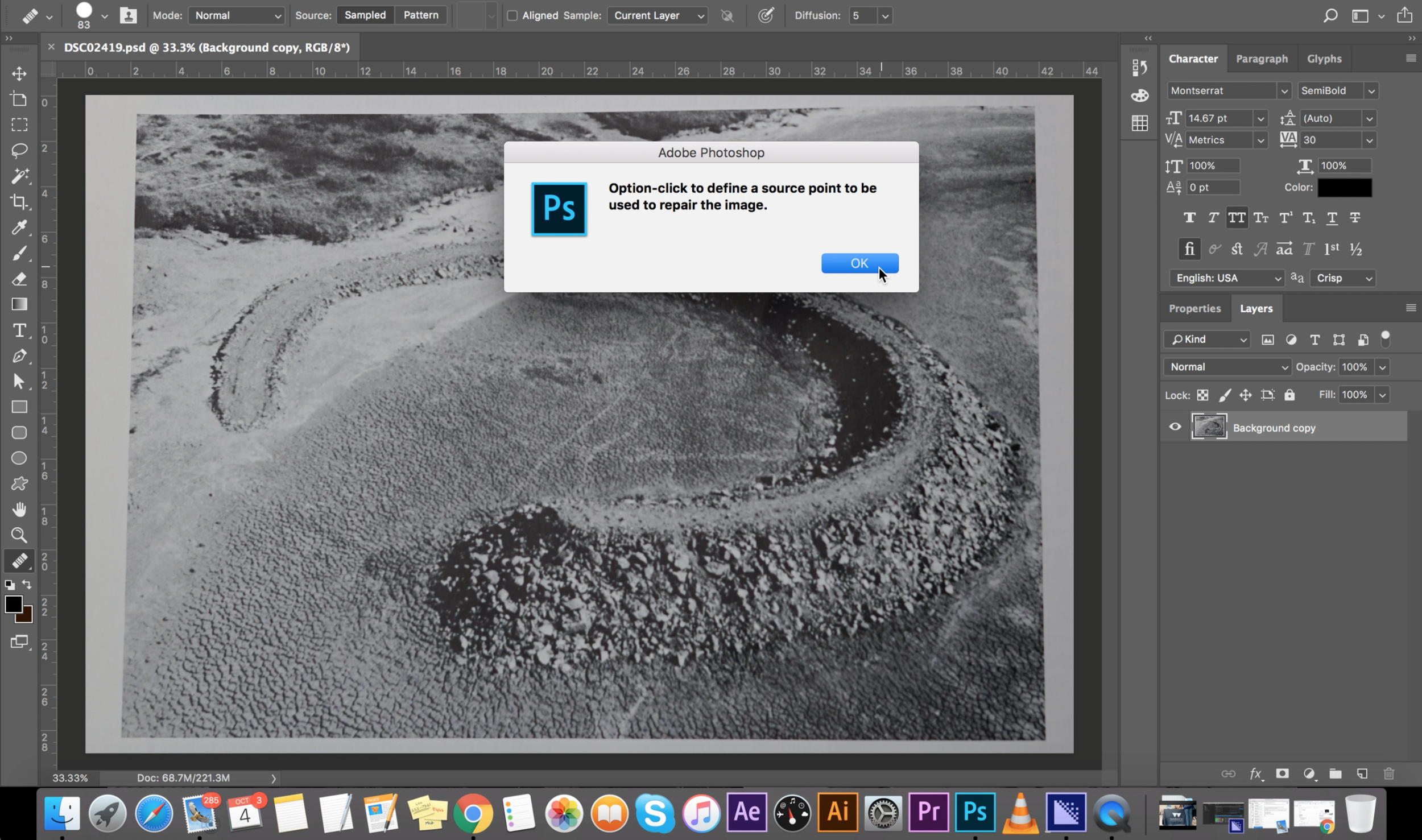Amarillo ramp (2018)
Amarillo Ramp (2018), Video, 9:06 minutes.
Amarillo Ramp (2018), is a video work about the artist Robert Smithson and his final work Amarillo Ramp (1973) which he began, died during its making, and was completed as a ritual of mourning by his wife and friends. Amarillo Ramp (1973) is a Robert Smithson work that was in its building and planning stage when, while surveying the site, Smithson died in a light aircraft crash. Later that year, the artists Nancy Holt (Smithsons’s wife), Tony Shafrazi and Richard Serra completed the land sculpture, which had been staked out by Smithson. This work became artwork and memorial to a well renowned and influential artist. In an article with Tony Shafrazi, he talks about a dream that he had on the morning of Smithson’s death. Shafrazi dreamt that he had woken up and stopped Smithson from flying in the plane that morning, only to wake up to the news of Smithson’s death. This story initially got me thinking about dual realities and other timelines and non linear time. When I saw in Time Crystals (the Robert Smithson Exhibition that visited Monash in 2018) that this was underlining a lot of Smithson’s work and essays, I decided to make a work about it.
Robert Smithson, 1969. (Domus 531 / February 1974 page detail. Robert Smithson in 1969)
In Smithson’s theories, Time Crystals are a function of non-entropy, an object that exists without the forward arrow of time. Geological forms that exist without time. I had been thinking about objects that exist out of the physicality of time besides these ‘time crystal’ forms and I chose to work in film, which is one of the only other things that can exist out of time and in non-entropy. I think this is why Smithson chose to let Spiral Jetty (1970) exist in so many forms and was trying to express in his film of the same name - non-linear time expressed through the geological mass/earth forms and film.
I was thinking of ways that I could express the idea of non-linear time, of the dual reality that could exist. I mean, this sculpture shouldn’t exist. Does it even exist? Since it wasn’t the work of Smithson, but a memorial made by his wife and friends. On further research about Amarillo Ramp (1973) and Smithson’s death, I found out that the stakes in the ground had been put in already, and that Smithson had died in the plane crash right next to the site, and the crater that his plane crashed into was still to the present day, visible just meters away from the site. Not that you can see it in any photographs.
The way that Spiral Jetty (1970) exists in numerous forms was a way that I would like to express the non-linear historical existence of Amarillo Ramp (1973). And also express the transcendental - in Shafrazi’s dream reality, Smithson still exists and is alive. So really, Amarillo Ramp (1973) exists in the form of the original sketch, the plans that Smithson made, the staked out land, the land sculpture that his friends made in real life, in the Land sculpture that he would have made in real life, the land sculpture that he would make in Shafrazi’s dream world, if he had have woken him, and the further documentation of this (such as film).
My idea was to photoshop the sculpture into an existing photo of that area that it was planned to be, but when I read that the sculpture had been continued in the form of a memorial, I decided to photoshop the sculpture out of the final photos. I was thinking of projecting these with a voice recording - maybe even of Smithson’s voice… or making a movie like Spiral Jetty (1970), but of Amarillo Ramp (1973), cutting out Smithson using after effects and splicing him into footage of the ramp. But there is actually very limited footage of the Ramp available.
When I heard about Smithson’s ideas of the artist’s time, and showing the research process and not just the finished product, I decided to show the process of photoshopping in the video. So I decided that there should be four versions of Amarillo Ramp that should all circle each other without a clear beginning and end, going backwards and forwards in time i.e. time is non-linear and free of time’s forward arrow in the film and its content. I chose a photo of the site from 1974 that was in a book of Smithson’s Unearthed Drawings and Collages, I also chose a diagram/sketch of the site plan from the same book, and I chose a blank piece of paper from the same book to represent the dream space, or the nothing space, where it wasn’t built in this reality at all.
So the end picture of the sculpture was photoshopped to look like it was before it was built, then this was drawn over with the pencil from the drawing, which was then erased to show the blank page. Then the photograph image of the sculpture was painted on again and so on ad infinitum, forever. I liked that you never go back to a proper ‘before’ shot of the site - so the only ‘before’ shot really is the blank page, but that doesn’t really work as a before shot, because it shows nothing, and the existence of nothing. This blank page signifies a tangent of a reality that we can’t see.
I think you really get a sense of non-linear time in the video, especially with its continuous looping, and using film to reverse time and erase time and fast-forward time. The ‘artist work’ was effective in that it really responded to Smithson’s ideas.
Amarillo Ramp (1973) Lake Tecovas, Amarillo, Texas. Rocks, earth. Image from Domus 531 / February 1974



